Pokémon has been nothing short of a phenomenon since it first debuted over 20 years ago on the Nintendo Game Boy. Whether you’ve been there since the very start, like yours truly, or came along later, the series has been a constant in the popular zeitgeist since it appeared. And yet, it’s always been on handheld systems. Sure, we’ve had Pokémon Stadium and Pokémon Snap and even Let’s Go, Pikachu/Eevee that reimagined the original Pokémon Red/Blue games for the Switch. But we’ve never had a brand-new generation that debuted on a home console—until now, that is, with Generation VIII’s Pokémon Sword and Pokémon Shield.
Pokémon Sword and Pokémon Shield start off like most any other Pokémon game. You are tasked with becoming the very best, like no one ever was. You quickly meet your best friend and rival, Hop, and his brother Leon, who is the Pokémon Champion for the Galar region and is famous for being undefeated. So, you and Hop set off to do the impossible in a race to be the first to beat Leon and become the new champ. Leon is intrigued by this ambitious mission, and unlike Pokémon games in the past, it is he who offers you your starter Pokémon. From there, you’ll have to take down eight unique gyms across the Galar region, each with a special challenge.
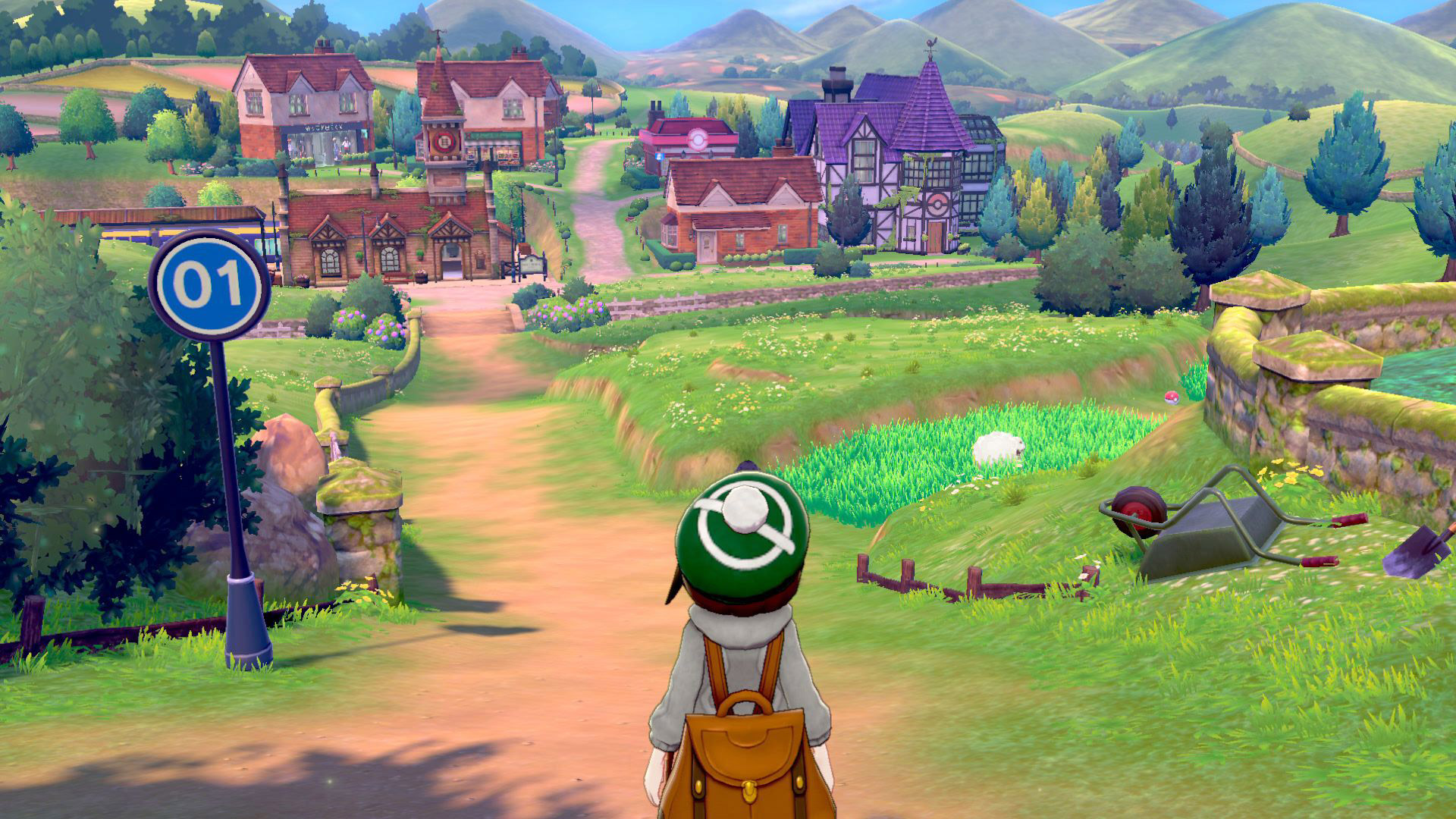
I chose Scorbunny as my starter, marking only the second time I haven’t chosen the water type in my personal history. Interestingly, Hop takes the Pokémon your starter is strongest against (in my case, the grass type Grookey) and the champion takes the Pokemon you’re weakest against (Sobble, the water type for me). Typically, your rival takes the Pokémon yours is weakest against, and the third stays with a Professor. It’s a small detail in regards to the overall game, but it makes so much sense you wonder why it wasn’t done sooner.
From a very high-level view, Pokémon Sword and Pokémon Shield then play like most other Pokémon games from here on out. You’ll hear tales of the legendary Pokémon Zacien and Zamazenta that protect Galar (foreshadowing an inevitable meetup), you’ll catch Pokémon in the wild to build a balanced party to take down gym leaders and collect badges to prove you’re worthy to combat the champion, and you’ll quell some inevitable trouble that arises from those who would use Pokémon for nefarious means. The core of Pokémon remains both relatively unchanged and tremendously fun. Where this latest generation of Pokémon both excels and falters, however, is in the differences that the games introduce when compared more directly with their predecessors.
One major upgrade is the look. Pokémon Sword and Pokémon Shield look absolutely stunning, taking full advantage of the Switch hardware and being on a proper home console. Every location you visit is incredibly detailed, and the world feels more lived in than most other Pokémon games with many more people and homes to explore. The British influence on the game is also evident everywhere you look, with some regions and towns modeled after popular tourist attractions like Stonehenge or the Roman Baths. There’s even a proper Underground that can shuttle you to places around Galar.
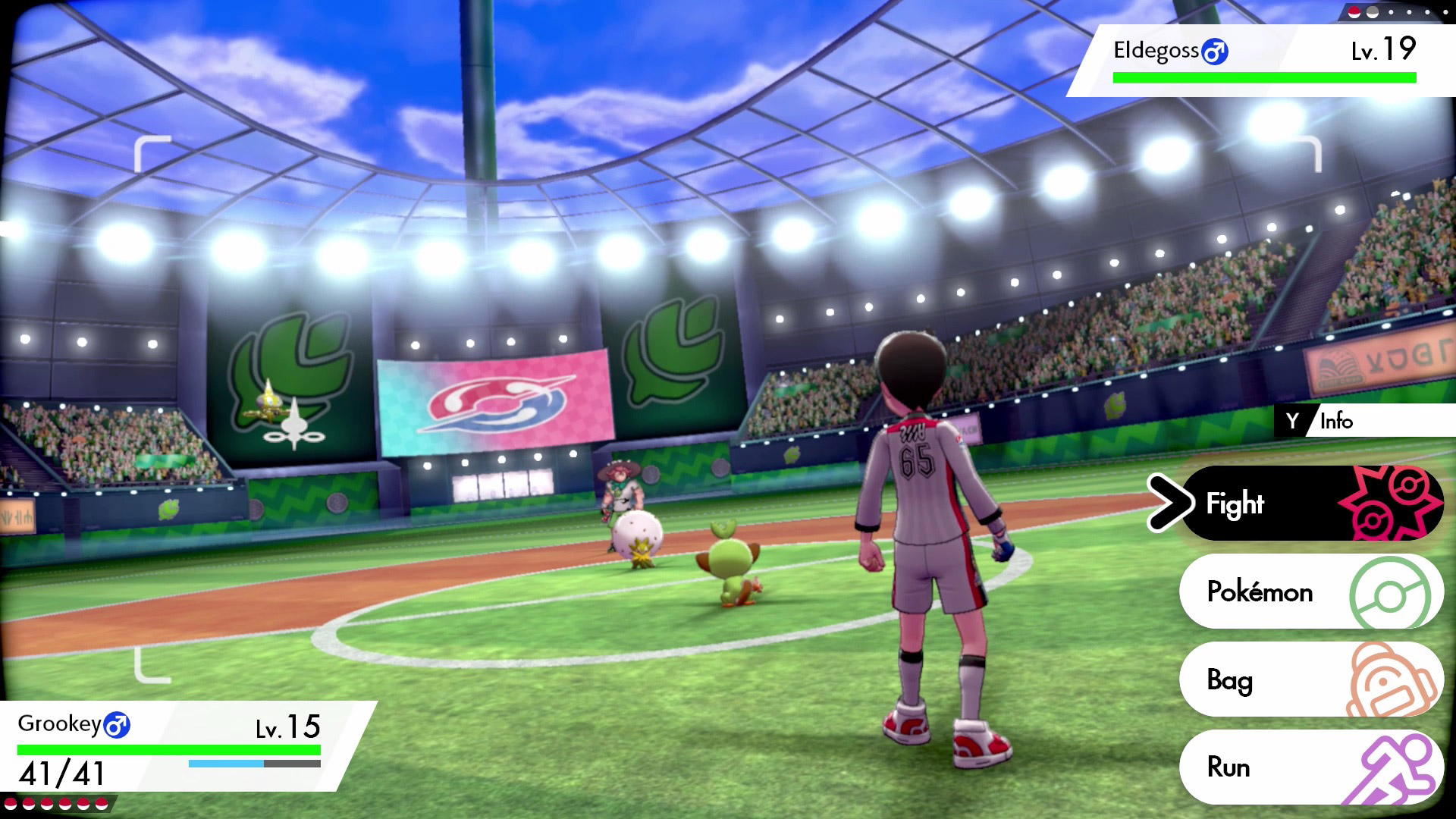
But the Underground is the first, and admittedly most minor, of several elements in Pokémon Sword and Pokémon Shield where it doesn’t feel like developer Game Freak leaned into an idea far enough. It isn’t long after your first Underground ride that Flying Taxis are introduced, representing the game’s true fast travel system and replacing Fly from previous games. In one fell swoop, they make the Underground needless window dressing.
Early in the game, well before you face your first gym, you have to cross an extensive expanse called the Wild Area, a massive field that connects to two key towns in Galar. The field features a bevy of new and old Pokémon alike, and is one of the best places to put together a balanced team for combat. Random encounters of the past are gone, and you can actually see Pokémon floating, flying, walking, or bouncing all around the field. There are still “surprise encounters” occasionally, marked by an exclamation point before the battle begins that are triggered by staying in tall grass for too long. But, for the most part, you’ll know exactly what wild Pokémon you’re trying to capture—and I, for one, am thrilled random encounters are all but gone now.
The Pokémon in the field are also consistently around certain levels in certain parts, offering up a makeshift barrier in the game to let you know to come back to particular parts of the field later on. For example, trying to capture a level 25 Butterfree when you’re only level 12 isn’t going to work most of the time.
The Wild Area also introduces two new gameplay components, the first of which is camping. Camping may not sound like much, but here you can play with your Pokémon and cook curry with them in fun little minigames that also have a benefit in battle. You can earn easy XP to help level up your Pokémon when you make camp, and developing a better relationship with your Pokémon while relaxing could lead to in-battle bonuses like shaking off paralysis or delivering critical hits more frequently. It serves as a nice distraction from constant battling, and I admit it’s pretty fun to play catch with your favorite Pokémon. Camping can be done in other areas later on, too.
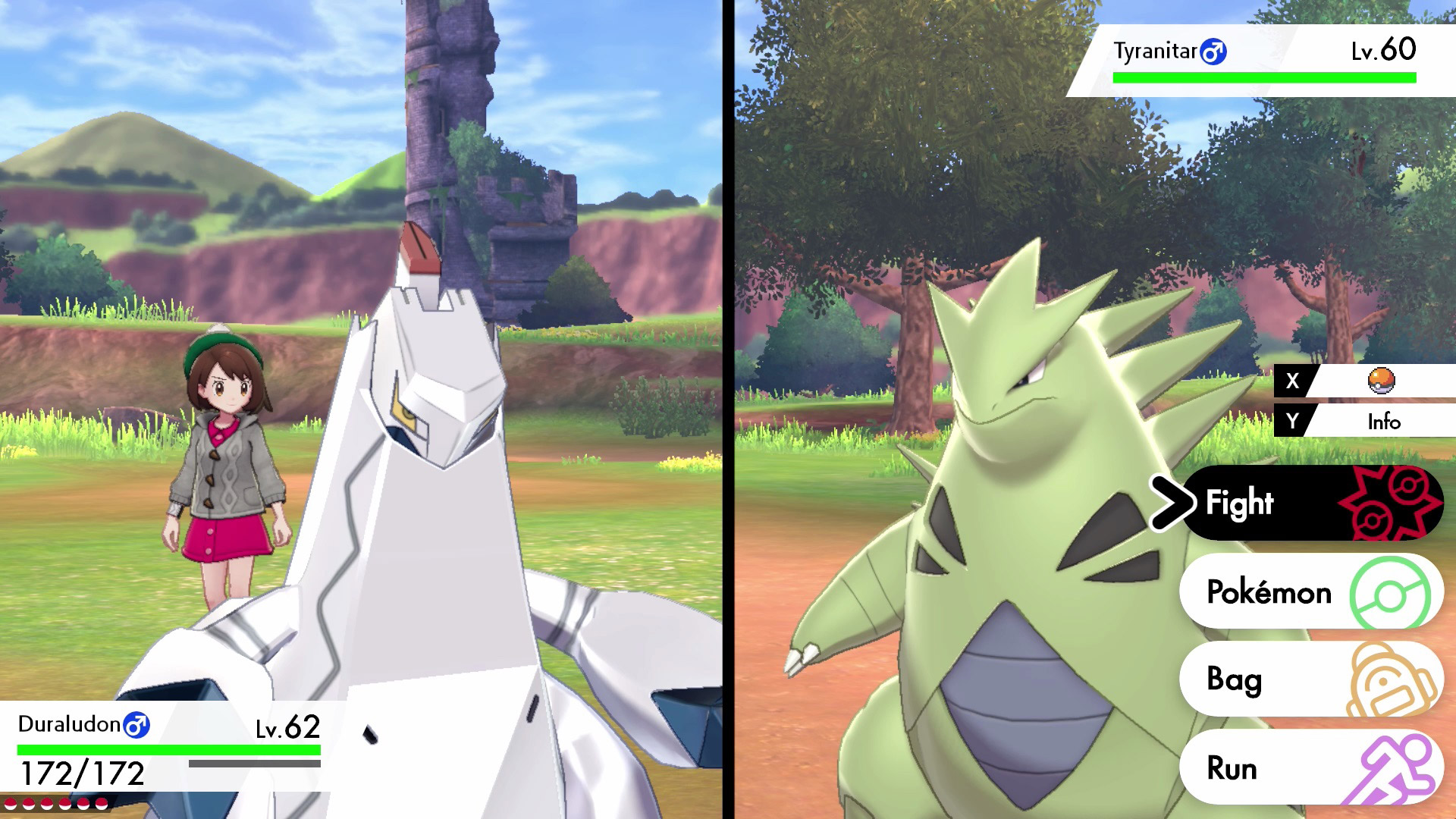
The other new feature is the highly talked about the Dynamax/Gigantamax feature. Dynamaxing a Pokémon is similar to the Mega Evolutions from Pokémon X/Y and Pokémon Sun/Moon, but far better balanced and far more critical to the story. Dynamaxing only lasts for three turns, whereas Mega Evolutions continued until a battle was over. Only one Pokémon per battle per trainer can be Dynamaxed and doing so replaces the moves of your Pokémon with Max moves based on type. For example, fire moves turn into Max Flare when Dynamaxed, whereas water moves turns into Max Geyser. This helps prompt players to ensure their Pokémon have a variety of different moves, not just always play to type. After all, a Pokémon with four fire-type moves would then only have one move while Dynamaxed. The only difference, besides appearance, with a Pokémon that can Gigantamax when they Dynamax, is they have an exclusive G-Max move that’s even more powerful, but the Pokémon capable of doing this are few and far between.
In the Wild Area, you’ll encounter your first Pokémon dens. These are powerful hot spots that cause energy to course through them. Any wild Pokémon that has made a home in these dens will automatically Dynamax. If you can defeat a wild Dynamaxed Pokémon, you’re guaranteed to catch it in its original, de-Dynamaxed form. It’s a great way to quickly build a powerful party to take on the eight gym leaders.
As great as all this was, and as much fun as I had exploring the Wild Area, there’s only one Wild Area in the entire game. If you’re like me and put a priority on becoming champion and taking on all the gyms as quickly as possible, you’ll only need to go through the Wild Area twice in the entire game. Sure, you can go back and visit whenever you want. But it was very disappointing that instead of filling Galar with these Pokémon havens, most of the rest of the game relies on routes and caves that harken back to the original Pokémon games. You can still catch wild Pokémon on these routes, but only the Wild Area has wild Dynamax Pokémon.
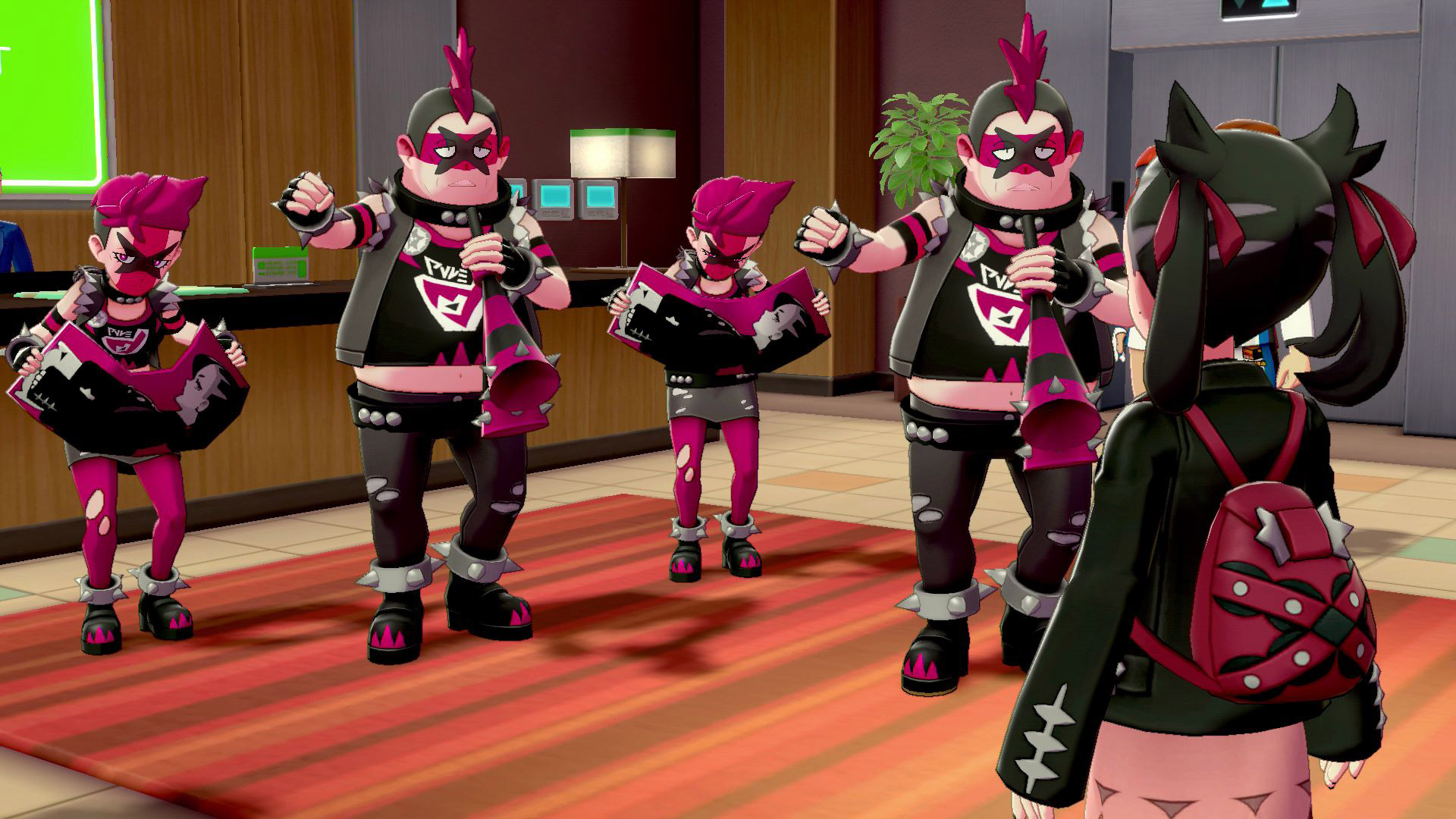
This leads into another issue with Pokemon Sword and Shield: inconsistent pacing. It wasn’t until hour seven of my playthrough that I got to my first gym, which made the game feel like it was going to be a slow burn. Once you get through the Wild Area that first time, however, the pace of the game quickens dramatically. Even with each gym offering a fun mini challenge (like herding Wooloo for Milo), you’ll roll through gym battles at a pretty breakneck pace; I was taking down gyms almost hourly. Just walk down a path, catch a couple more Pokémon for the Pokédex, and snag another badge. Other Pokémon games spread their gyms out more evenly, offering you challenges, puzzles, and sometimes even towns that might not have a Pokémon gym, but which offered other distractions in-between. Had the pacing been more consistent the whole way through, the linearity might’ve been less noticeable and less problematic.
That inbalance may have been less noticeable because, as the titles might suggest, Pokémon Sword and Pokémon Shield is focused more on battling than any previous Pokémon game. It’s not just celebrated in the Galar region—it’s their entire way of life. The goal of completing your Pokédex is a distant second to becoming champion now. This has also led to some user interface and gameplay innovations that I didn’t realize we needed so badly until we got them here. Like, for example, clearly telling players moves that are effective or not effective against Pokémon before you use them as long as you have Pokédex data on your opponent; no longer having to go to a Pokémon Center to adjust your team, instead now being able to just switch Pokémon out of your party with a box on the fly; and even a new feature called Poké Jobs that allow Pokémon not in your party to do missions and gain XP on their own. These were all nice little conveniences that went a long way towards my enjoyment of the game.
And, of course, we need to talk about the Pokédex. Not a second of my game was less enjoyable because the Galar region doesn’t have access to all of the hundreds of Pokémon previously introduced. Instead, I found joy in finding all of the regional exclusive variants the game offers, as well as dozens of brand new Pokémon including Drednaw and Corviknight, who were anchors in my party alongside Scorbunny from almost the beginning of the game. There are still plenty of Pokémon to play around with, and the idea that another region wouldn’t have access to all the Pokémon in the world makes perfect sense. Think of them like the region exclusives in Pokémon GO.
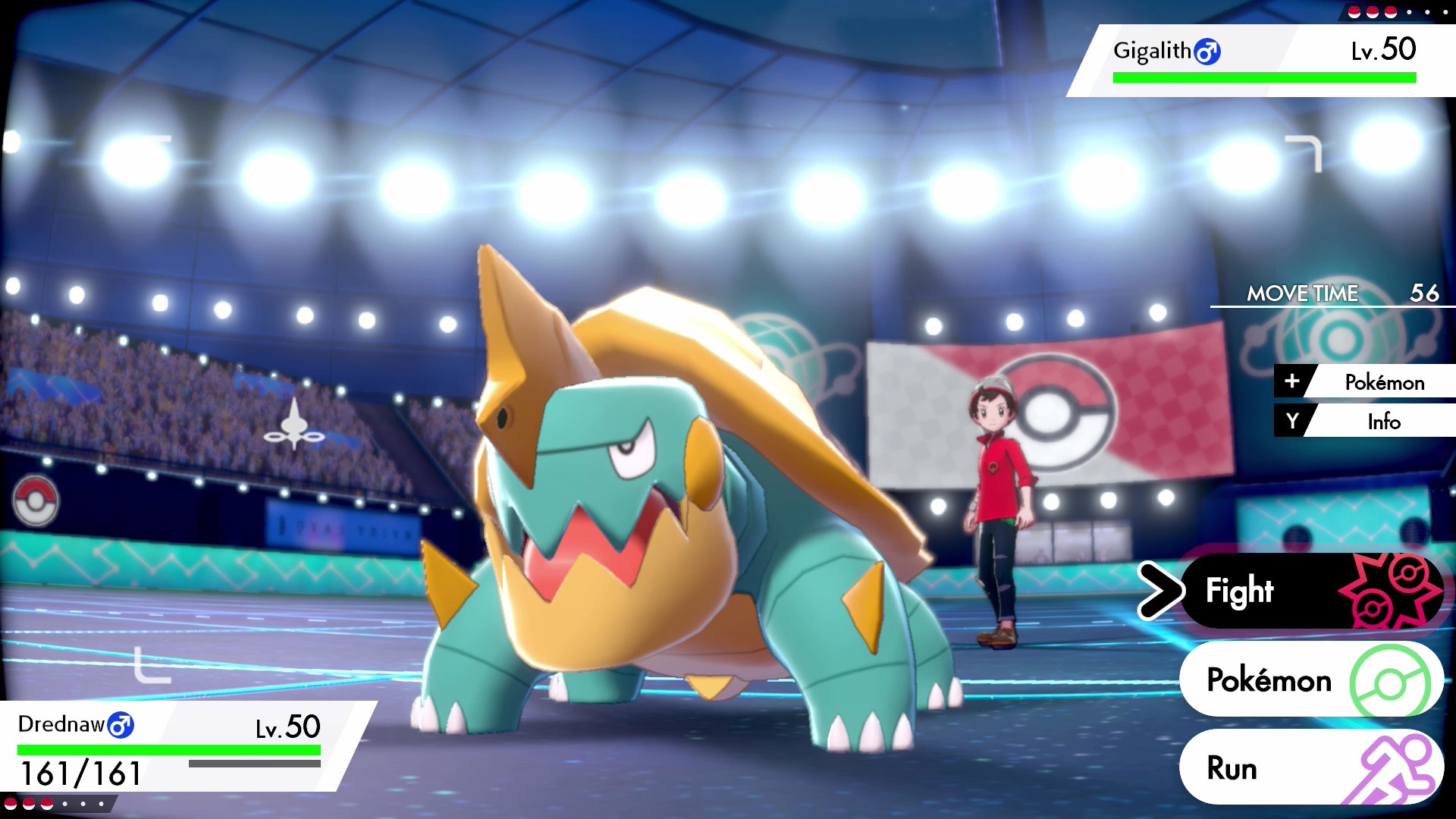
Finally, I wasn’t able to put the online play for Pokémon Sword and Pokémon Shield through its proper paces, as the servers still aren’t up. That said, I was able to do a local link battle with Mike from the EGM main office. Similar to how you can make a code for private groups in Pokémon GO raids, you can make a number that you share for local battling, which worked without a hitch when we tested it out. That said, there was still a bit of a balancing issue. After the game reset all our Pokémon to level 50—as is standard—since Mike was using early game moves, and all my Pokémon were touting end game abilities, even when matchups would normally favor him like his grass-type Grookey against my water/rock-type Drednaw, I pummeled him. Of course, most people won’t even try battling until they get later in the game, but Mike did me a solid by taking his lumps to test out the link battles.
There’s also features like surprise trades now, where you put a random Pokémon up for grabs and get a random Pokémon in return. And, similar to Pokémon GO’sraids, those Wild Area Dynamax battles can be fought together with up to three friends. Even though Mike joined me for one despite not being anywhere near my level, the game balance battles so that, when you catch the Pokémon, it’s close to the level of each trainer. So, the Pokémon Mike could capture after the battle was a level 20, while for me, it was a level 50. We both get a Pokémon, and at least here the game remained balanced.
Pokémon Sword and Pokémon Shield are among the best games the series has ever offered. The Galar region is fun to explore, the new Pokémon it offers up are some of the most interesting the series has seen yet, and the Dynamax system adds a new wrinkle that freshens things up like never before. The adventure can be a little linear—and maybe even tedious at times—but it features everything that makes Pokémon great. Hopefully next time, Game Freak will push their new ideas to the limits and really deliver something special.

|
★★★★☆
The first new-generation Pokémon game to release on a proper home console does not disappoint. New features like Dynamaxing and the Wild Area are fun additions that make the experience of becoming a Pokémon champion still feel fresh. It’s just a shame that Game Freak didn’t lean into the new features more than they did. |
Developer Game Freak Inc≥ Publisher Nintendo ESRB E - Everyone Release Date 11.15.2019 |
| Pokémon Sword and Pokémon Shield is available on Nintendo Switch. Primary version played was for Switch. Product was provided by Nintendo for the benefit of this coverage. EGM reviews on a scale of one to five stars. | |

Ray has extensive roots in geek culture, as he’s written about videogames, comics, and movies for such outlets as Newsday.com, ESPNNewYork.com, Classic Game Room on YouTube, Collider.com, Comicvine.com, and of course EGM. His main goal in life? To become king of all geek media, of course!